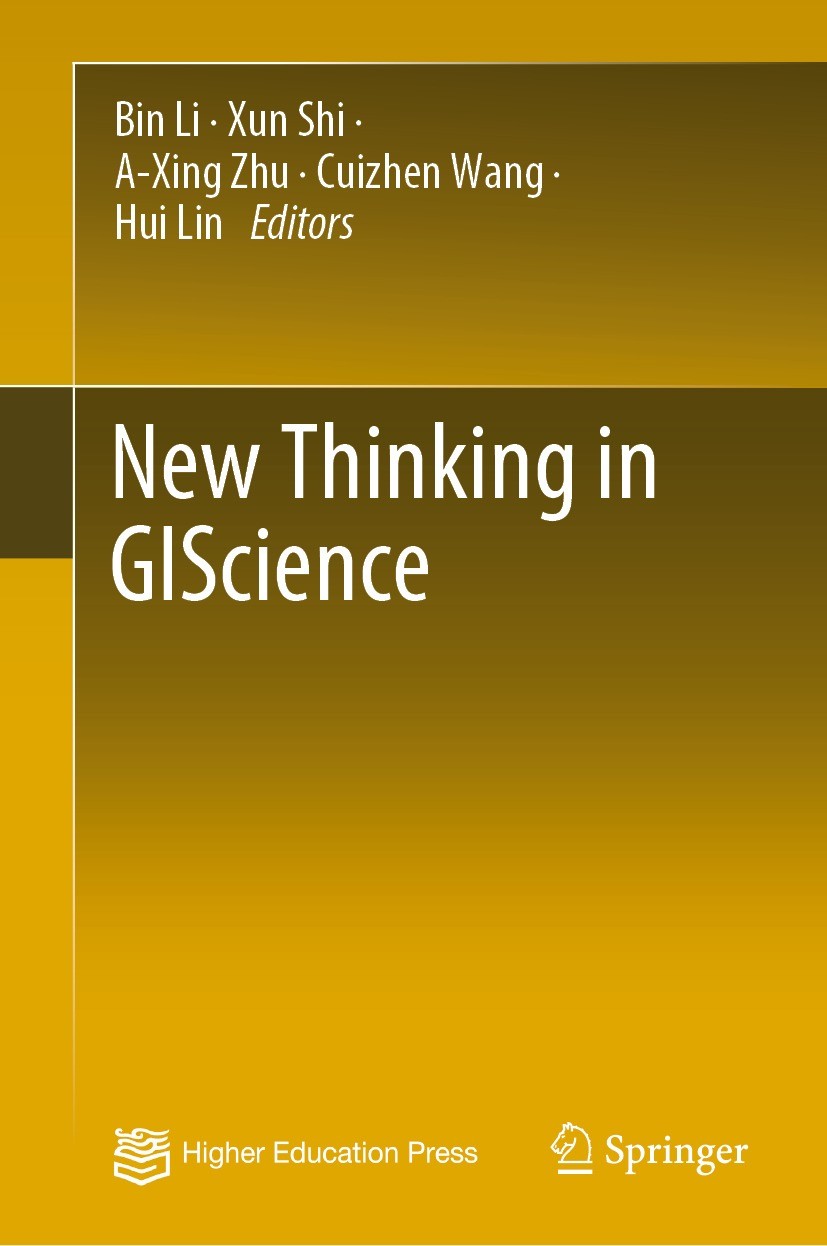| 書目名稱 | New Thinking in GIScience | | 編輯 | Bin Li,Xun Shi,Hui Lin | | 視頻video | http://file.papertrans.cn/666/665858/665858.mp4 | | 概述 | Presents the cutting edge research and development in GISci.Offers the vision on the direction of future development of GISci from expert prospects.Promotes GISci in the new era of big data, deep lear | | 圖書封面 |  | | 描述 | .This book is a collection of seminal position essays by leading researchers on new development in Geographic Information Sciences (GIScience), covering a wide range of topics and representing a variety of perspectives. The authors propose enrichments and extensions to the conceptual framework of GIScience; discuss a series of transformational methodologies and technologies for analysis and modeling; elaborate on key issues in innovative approaches to data acquisition and integration, across earth sensing to social sensing; and outline frontiers in application domains, spanning from natural science to humanities and social science, e.g., urban science, land use and planning, social governance, transportation, crime, and public health, just name a few. The book provides an overview of the strategic directions on GIScience research and development. It will benefit researchers and practitioners in the field who are seeking a high-level reference regarding those directions.. | | 出版日期 | Book 2022 | | 關鍵詞 | GIS (Geographical Information System); GISci; GISc; Remote Sensing; AI in GIS; Deep Learning in GIS; Geovi | | 版次 | 1 | | doi | https://doi.org/10.1007/978-981-19-3816-0 | | isbn_softcover | 978-981-19-3818-4 | | isbn_ebook | 978-981-19-3816-0 | | copyright | Higher Education Press 2022 |
The information of publication is updating

|
|
 |Archiver|手機版|小黑屋|
派博傳思國際
( 京公網安備110108008328)
GMT+8, 2025-10-8 14:33
|Archiver|手機版|小黑屋|
派博傳思國際
( 京公網安備110108008328)
GMT+8, 2025-10-8 14:33


